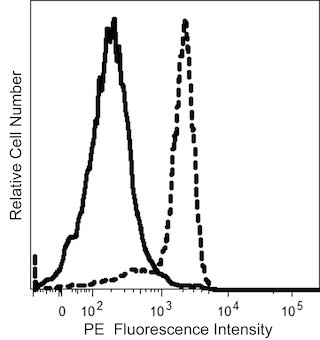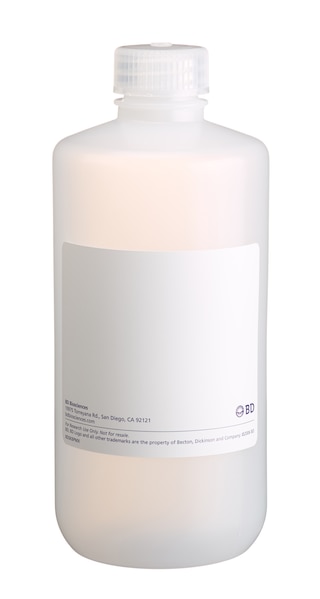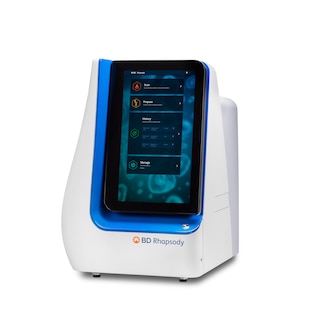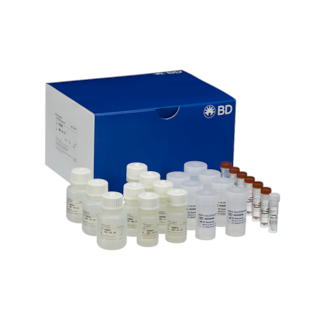Old Browser
This page has been recently translated and is available in French now.
Looks like you're visiting us from {countryName}.
Would you like to stay on the current country site or be switched to your country?


Oligo Mouse Anti-Human CD123 (IL-3 Receptor α)
Regulatory Status Legend
Any use of products other than the permitted use without the express written authorization of Becton, Dickinson and Company is strictly prohibited.
Preparation And Storage
Recommended Assay Procedures
Put all BD® AbSeq Reagents to be pooled into a Latch Rack for 500 µL Tubes (Thermo Fisher Scientific Cat. No. 4900). Arrange the tubes so that they can be easily uncapped and re-capped with an 8-Channel Screw Cap Tube Capper (Thermo Fisher Scientific Cat. No. 4105MAT) and the reagents aliquoted with a multi-channel pipette.
BD® AbSeq tubes should be centrifuged for ≥ 30 seconds at 400 × g to ensure removal of any content in the cap/tube threads prior to the first opening.
Product Notices
- This reagent has been pre-diluted for use at the recommended volume per test. Typical use is 2 µl for 1 × 10^6 cells in a 200-µl staining reaction.
- The production process underwent stringent testing and validation to assure that it generates a high-quality conjugate with consistent performance and specific binding activity. However, verification testing has not been performed on all conjugate lots.
- Please refer to bd.com/genomics-resources for technical protocols.
- Caution: Sodium azide yields highly toxic hydrazoic acid under acidic conditions. Dilute azide compounds in running water before discarding to avoid accumulation of potentially explosive deposits in plumbing.
- Source of all serum proteins is from USDA inspected abattoirs located in the United States.
- Illumina is a trademark of Illumina, Inc.
- Please refer to http://regdocs.bd.com to access safety data sheets (SDS).
- For U.S. patents that may apply, see bd.com/patents.
Companion Products





The 7G3 monoclonal antibody specifically recognizes human CD123, the 70 kDa IL-3 Receptor α (IL-3Rα) chain. CD123 associates with CD131, the 120-140 kDa Common β chain to form the IL-3 Receptor Complex. CD131 is shared with the receptors for interleukins IL-5 and GM-CSF. IL-3Rα is expressed on hematopoietic progenitors and plays an important role in hematopoietic progenitor cell growth and differentiation. It is also expressed by mast cells, macrophages and a CD5+ B cell subset. This antibody has been reported to block the binding of 125I-IL-3 to high and low affinity IL-3 receptors. In functional experiments, this antibody was found to inhibit acute myeloid leukemia cell proliferation, basophil histamine release, endothelial cell-mediated IL-8 secretion, and neutrophil transmigration. This antibody has been reported to be useful for immunoprecipitation, Western blot and immunofluorescent staining for flow cytometry. At the Fifth HLDA Workshop, the human IL-3 receptor was designated CD123.
Development References (5)
-
Korpelainen EI, Gamble JR, Smith WB, et al. The receptor for interleukin 3 is selectively induced in human endothelial cells by tumor necrosis factor alpha and potentiates interleukin 8 secretion and neutrophil transmigration.. Proc Natl Acad Sci USA. 1993; 90(23):11137-41. (Biology). View Reference
-
Macardle PJ, Chen Z, Shih CY, et al. Characterization of human leucocytes bearing the IL-3 receptor. Cell Immunol. 1996; 168(1):59-68. (Clone-specific: Flow cytometry, Fluorescence microscopy, Immunofluorescence). View Reference
-
Schlossman SF. Stuart F. Schlossman .. et al., ed. Leucocyte typing V : white cell differentiation antigens : proceedings of the fifth international workshop and conference held in Boston, USA, 3-7 November, 1993. Oxford: Oxford University Press; 1995.
-
Smith WB, Guida L, Sun Q, et al. Neutrophils activated by granulocyte-macrophage colony-stimulating factor express receptors for interleukin-3 which mediate class II expression. Blood. 1995; 86(10):3938-3944. (Clone-specific: Flow cytometry, Functional assay, Inhibition). View Reference
-
Sun Q, Woodcock JM, Rapoport A, et al. Monoclonal antibody 7G3 recognizes the N-terminal domain of the human interleukin-3 (IL-3) receptor alpha-chain and functions as a specific IL-3 receptor antagonist.. Blood. 1996; 87(1):83-92. (Immunogen: Blocking, Flow cytometry, Immunoprecipitation, Neutralization). View Reference
Please refer to Support Documents for Quality Certificates
Global - Refer to manufacturer's instructions for use and related User Manuals and Technical data sheets before using this products as described
Comparisons, where applicable, are made against older BD Technology, manual methods or are general performance claims. Comparisons are not made against non-BD technologies, unless otherwise noted.
For Research Use Only. Not for use in diagnostic or therapeutic procedures.
Report a Site Issue
This form is intended to help us improve our website experience. For other support, please visit our Contact Us page.